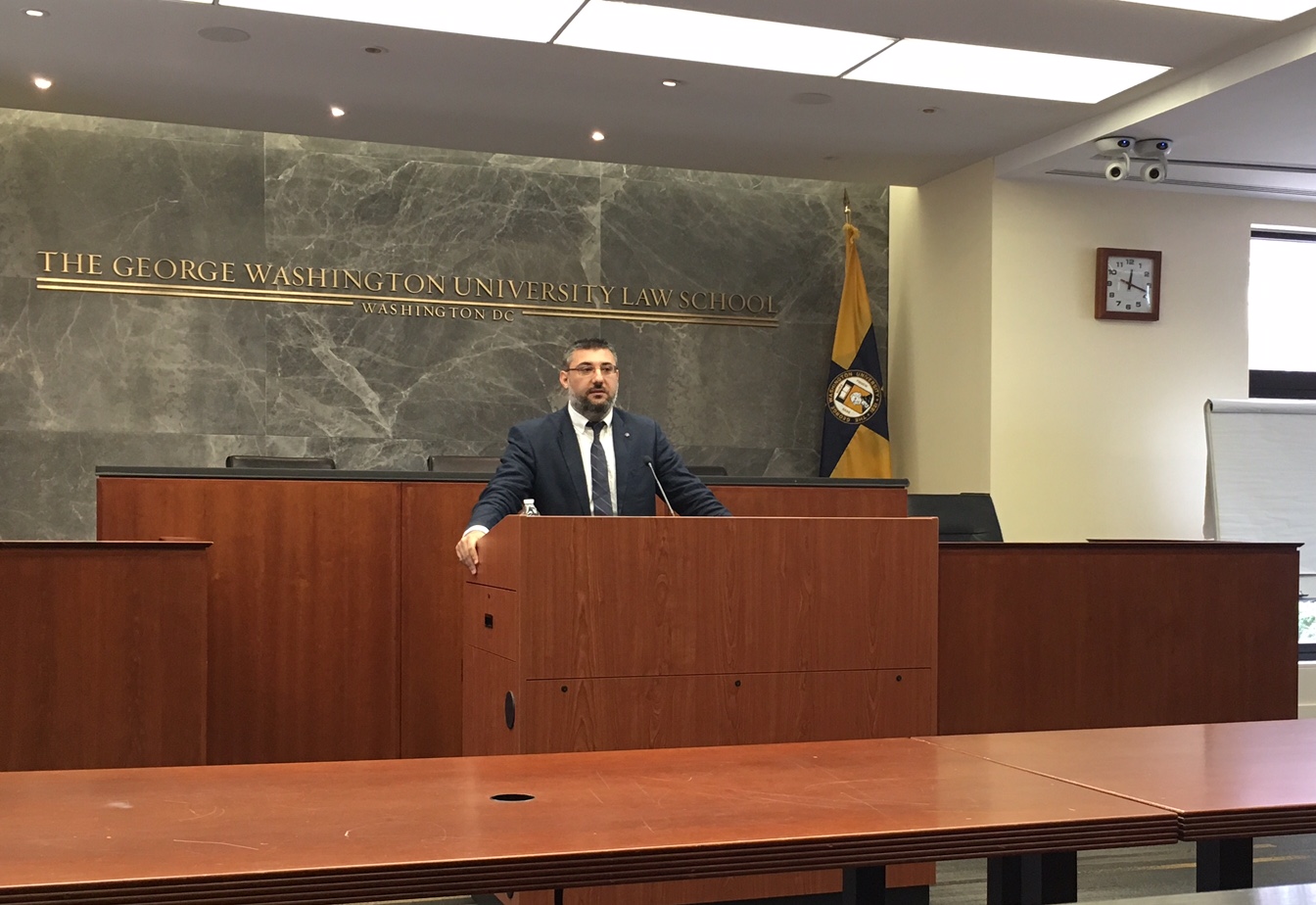Washington, DC — Dr. Ümit Kurt, a Post-Doctoral Fellow at Harvard University’s Center for Middle Eastern Studies, outlined the complex laws promulgated by Turkey to systematically dispossess Armenians of their properties during and after the Armenian Genocide, in a February 28 talk at George Washington University Law School.
“We were honored to partner with George Washington University Law School and Dean Susan Karamanian on the lecture by Dr. Ümit Kurt, which has revealed many important questions about Armenian property claims that the Armenian Legal Center for Justice and Human Rights will continue to systematically pursue,” Kate Nahapetian, Executive Director of the Armenian Legal Center noted.
“One of the many unsettled consequences of the Armenian Genocide is the status of the property once held by the Armenians. Dr. Kurt provided critical insight into the laws and practices of the Ottoman Empire as they related to the property of Armenians and their continuation under the Republic of Turkey. His work relied on important original sources and shed new light, in particular, on the liquidation of Armenian assets,” explained Susan Karamanian, Associate Dean for International and Comparative Legal Studies at George Washington University Law School, who hosted the talk.
In his talk, Dr. Kurt noted that the state-orchestrated plunder and impoverishment of victims was an integral aspect of the Armenian Genocide. “Despite widespread incidents of private plunder and corruption, there is no doubt that the seizure of Armenian property was primarily state-orchestrated genocide. . . . By losing all their … assets… [Armenians] were turned from existence to non-existence,” Dr. Kurt explained. The impoverishment of the victim ensured that they would not be able to return to their native lands and helped fund the genocide machine.
Read also
The dispossession did not stop after the fall of the Ottoman Empire, but continued into the new Turkish Republic. Dr. Kurt explained that both the Ottoman Committee of Union and Progress (CUP) and Turkish Republic’s Kemalist leaders concocted ways to make the illegal process of property confiscation look legal through complex laws, regulations and decrees.
For instance, the first act of the new Turkish Republic’s Kemalist government was to annul provisions meant to return properties to Armenians. The Kemalist government brought back the liquidation laws of the Ottoman perpetrators and even expanded them.
After the Lausanne Treaty was signed, which required the return of confiscated properties, Turkey created a virtual wall that prohibited Armenians’ return and ability to reclaim their assets, Dr. Kurt observed.
Convoluted laws and regulations were used, once again, to consolidate the fruits of the genocidal crime. Dr. Kurt focused on the US-Turkey Compensation Agreement of 1934 as an example of this. After the genocide, Armenians, who had not received Ottoman permission to become naturalized American citizens, were, for practical purposes, stripped of Turkish citizenship rights and prohibited from returning. However, when the United States tried to resolve their property claims through the US-Turkey Compensation Agreement of 1934, Turkey insisted that Armenian American claims be excluded, refusing to recognize their US citizenship. As a result, Americans of Armenian heritage were denied justice in both their adopted and native countries.
Dr. Kurt also touched on the issue of archival records, noting that the abandoned properties and liquidation commissions set up to dispose of Armenian properties kept meticulous records, but these records are still inaccessible. Dr. Kurt tried unsuccessfully for more than a year to gain access. He was able to publish one record from the commissions, which was maintained by an Armenian family, that detailed the properties down to the spoons and knives that were taken and to whom they were sold.
As for the Land Registry records, which are well-organized and can provide a detailed history to Armenian heirs of their families’ properties, Dr. Kurt explained that plans in 2005 to make them publicly accessible were quickly prohibited by Turkey’s National Security Committee.
Ümit Kurt received his Ph.D. from Clark University, History Department, in 2016. He got his MA and BA degrees in Turkey at Sabancı University and Middle East Technical University respectively. He taught in the Faculty of Arts and Science in Sabancı University and has been a visiting professor in the Armenian Studies Program at California State University. He has published numerous articles on confiscation of Armenian properties during the genocide. More details about Ottoman and Turkish laws surrounding the plunder of Armenian assets can be found in his latest book with Taner Akcam, The Spirit of the Laws: The Plunder of Wealth in the Armenian Genocide (New York and Oxford: Berghahn Books, 2015).
The Armenian Legal Center for Justice and Human Rights (ALC) fights to redress human rights violations emanating from the Armenian Genocide that continue to this day and undermine stability in a region that has for far too long been marred by policies founded on genocide, not human rights and justice. ALC promotes scholarship on the legal avenues for addressing the challenges emanating from the Armenian Genocide, in addition to pursuing cases in national and international courts, while promoting the protection of Armenian cultural heritage through the return of stolen properties and artifacts.























































